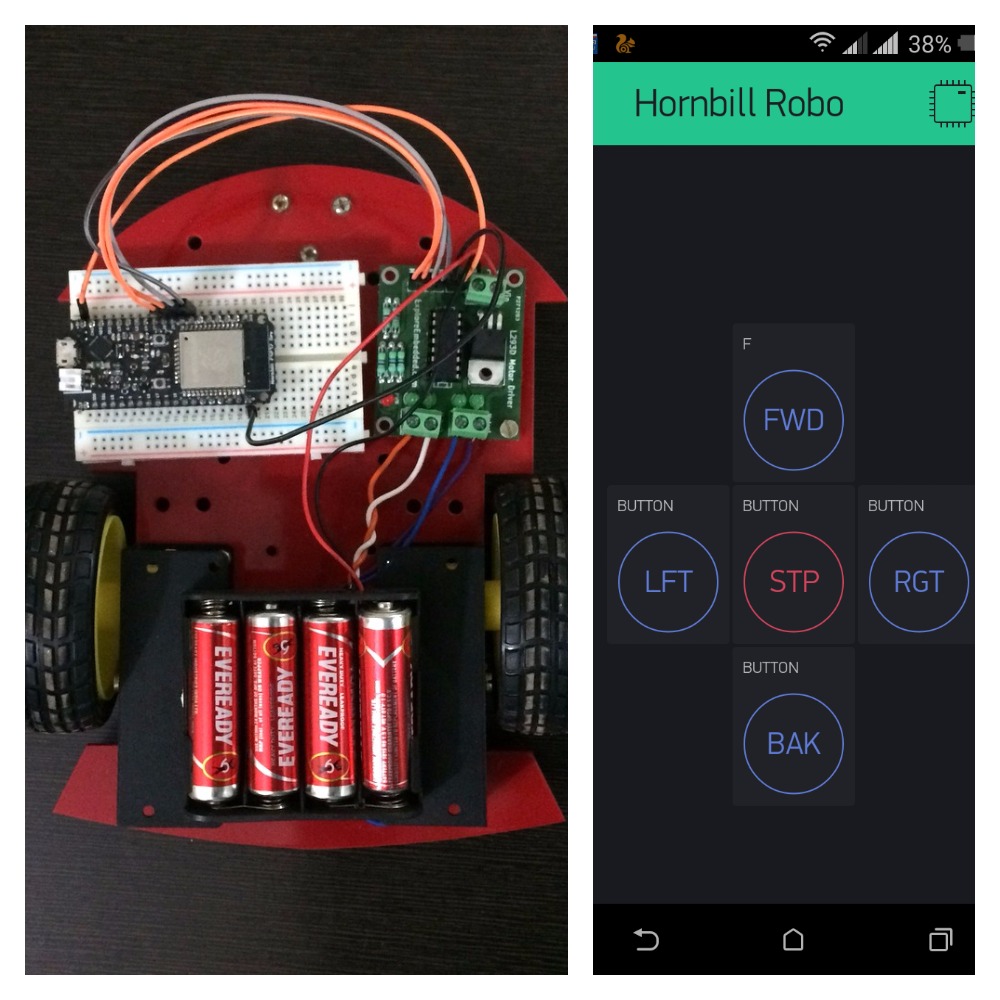We took a little break to build this two wheel drive (TWD) robot steered with the Blynk App. It was simple enough for a noon project. ESP32 is not just a WiFi or Bluetooth adapter, it was a capable enough processor. We use it to build a WiFi controlled Robot.

Schematic
Wiring Digram
Assembly Instructions
Follow this [http://exploreembedded.com/wiki/Explore_Robo tutorial] for assembling Robot.
Code


